Vegan Cream Cheese
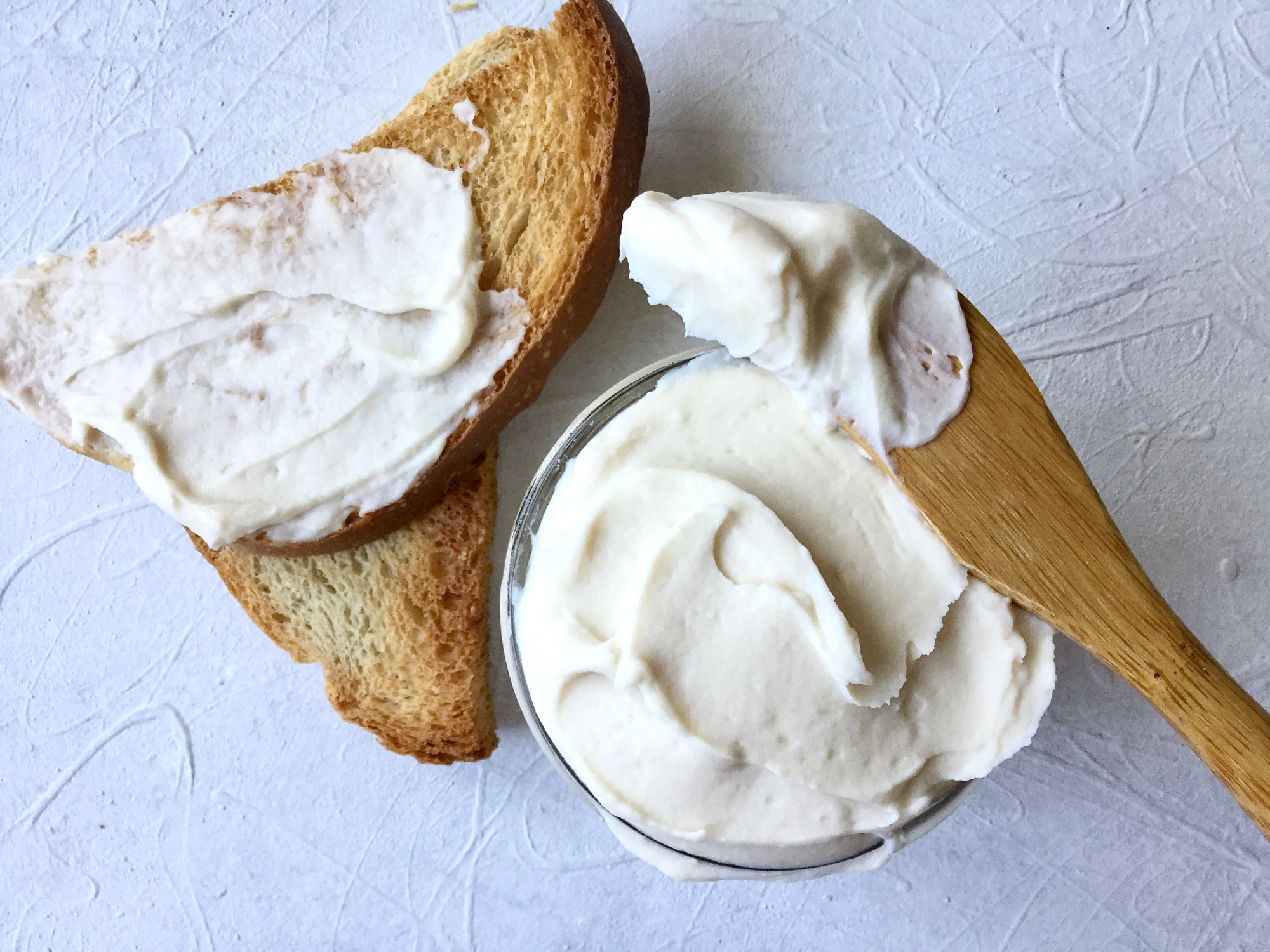
An easy and simple recipe for vegan cream cheese that doesn’t involve the use of tofu or cashews. Just the magic of some unsweetened plain soy yogurt. After being blended with unrefined coconut oil, it yields a smooth, creamy and tangy vegan cream cheese. Perfect to spread on some bread or to use in sweet applications.
But does it actually taste like cream cheese?
Sort of. I won’t lie to you and say that it 100% does. It’s obviously not going to replicate the taste of dairy, but it has the same creamy mouth feel and a flavour reminiscent of it, with perhaps a bit more tang. The flavour will also depend on the yogurt you end up using.
If you’re in Canada, I used the yoso soygo plain yogurt, which has a very slight sweetness and soy flavour with a more pronounced acidic aftertaste. All that affects the final taste of the cream cheese since it’s the main component of it.
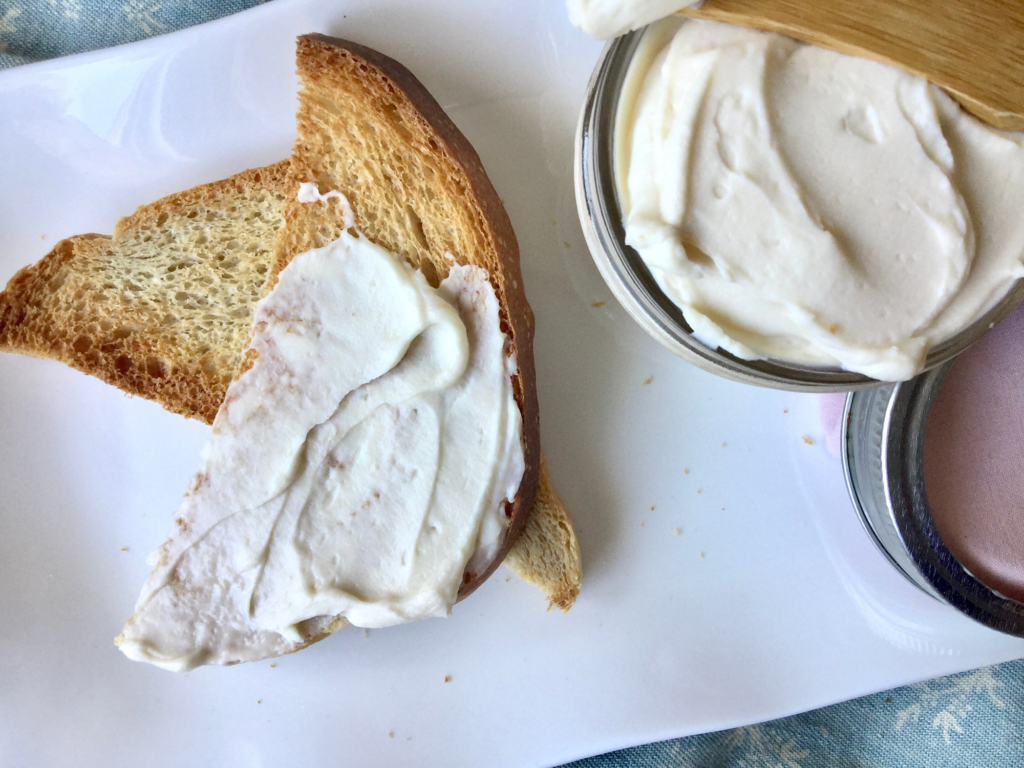
But since it’s the only unsweetened soy yogurt I have access to, I made due with what I have. Maybe I’ll just have to make my own vegan yogurt eventually. I would’ve loved to also test this recipe with a nut-based yogurt, but there are no unsweetened varieties where I am. (I bought the yoso unsweetened nut yogurt thinking it’s perfect for it, but it turns out there’s cinnamon and other flavourings in it. *Sigh*)
UPDATE: I got my hands on some silk unsweetened almond yogurt and it worked just as well in the recipe! The yogurt does have a somewhat gritty texture so I just blended it longer. It’s also not as tangy as the soy yogurt but you can adjust that with extra lemon juice after if you’d like.
So if you have access to different kinds of unsweetened plain soy yogurt, I would go with the one that has the shortest ingredient list and least additives. If your choices are limited, the flavour can be adjusted (to a certain extent) in the later steps of the recipe as I’ll mention.
How to make vegan cream cheese
It all starts with straining the yogurt to obtain a thicker greek or labneh-style one. By getting rid of a good portion of the liquid, it also helps prevent the cream cheese from splitting when mixed with the coconut oil.
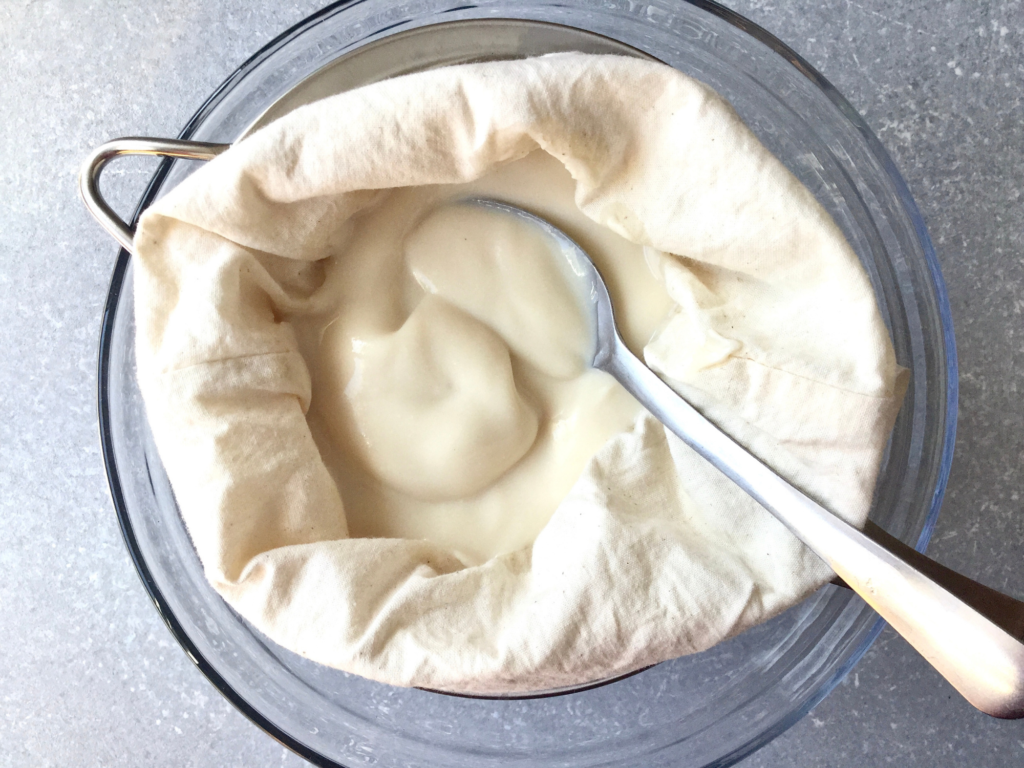
Simply place a strainer with 2-3 layers of cheesecloth, a nut milk bag or muslin cloth in it over a bowl. Make sure the bowl is deep enough for the strainer not to sit in the liquid. Then pour in the yogurt, tie it up and let it drain in the fridge for 24 hours.
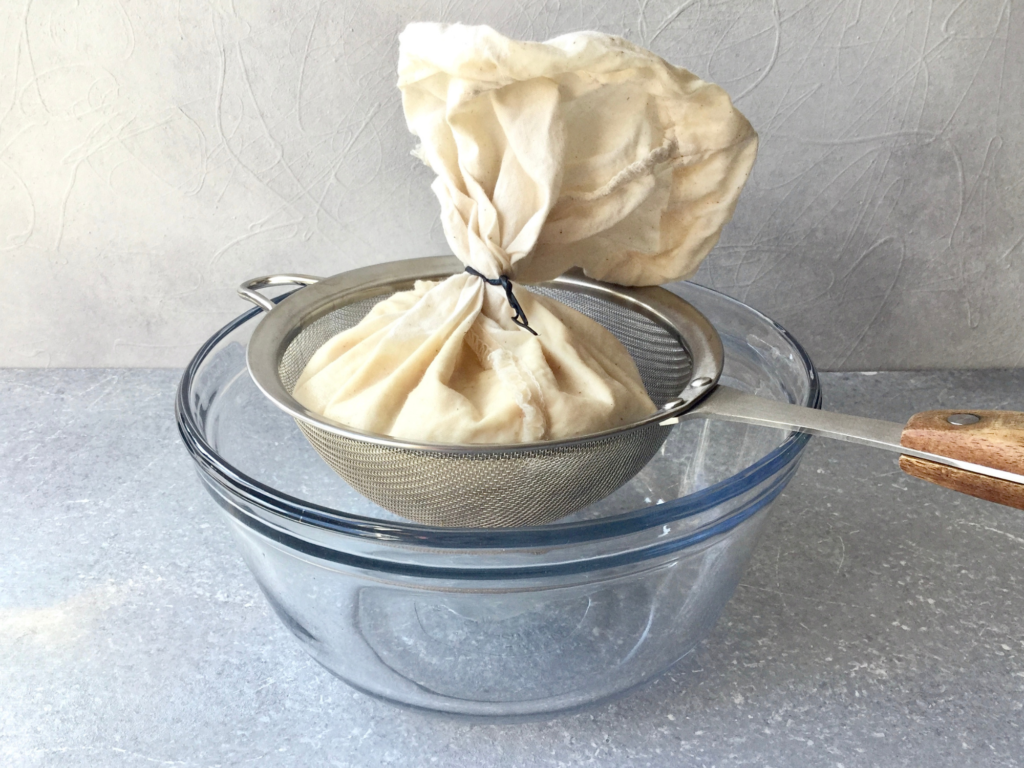
After 24 hours, the yogurt will be much thicker and creamier, a perfect base for cream cheese! The liquid left in the bowl can be kept for smoothies or to start a batch of homemade yogurt, since it’s full of probiotics.
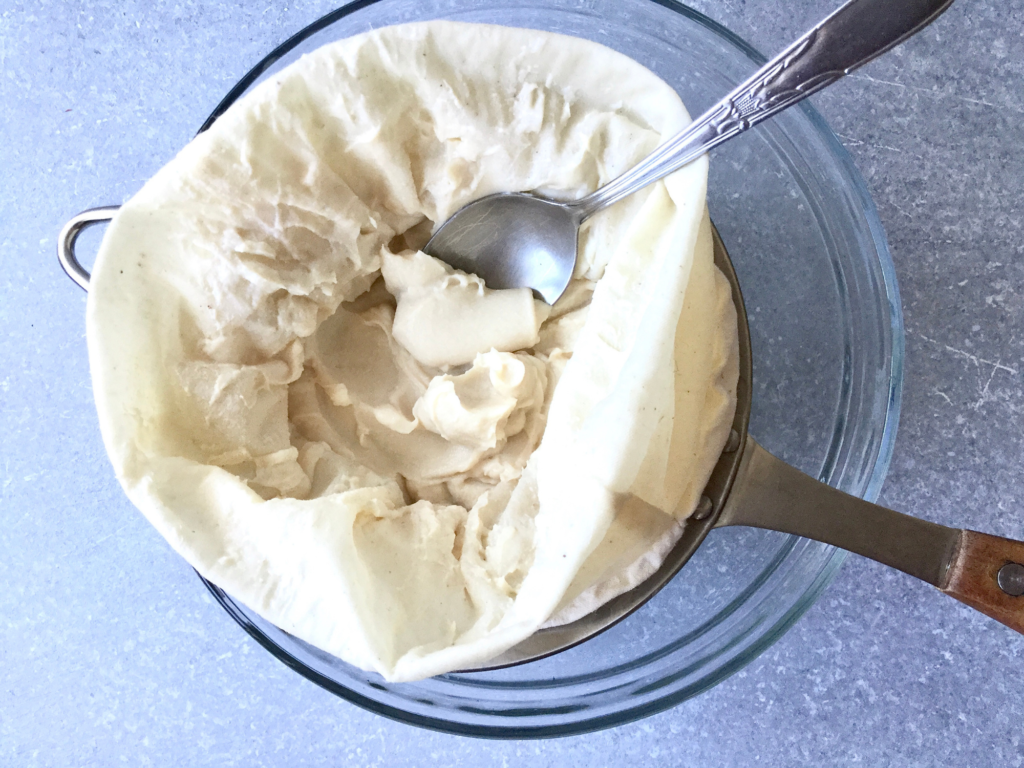
Transfer the yogurt to a small food processor or blender and melt the refined coconut oil. It’s preferable if both ingredients are close to the same temperature for a stable emulsion, but it’s not the end of the world if they’re not. But if your yogurt is cold, make sure the coconut oil is hot enough not to solidify when poured in.
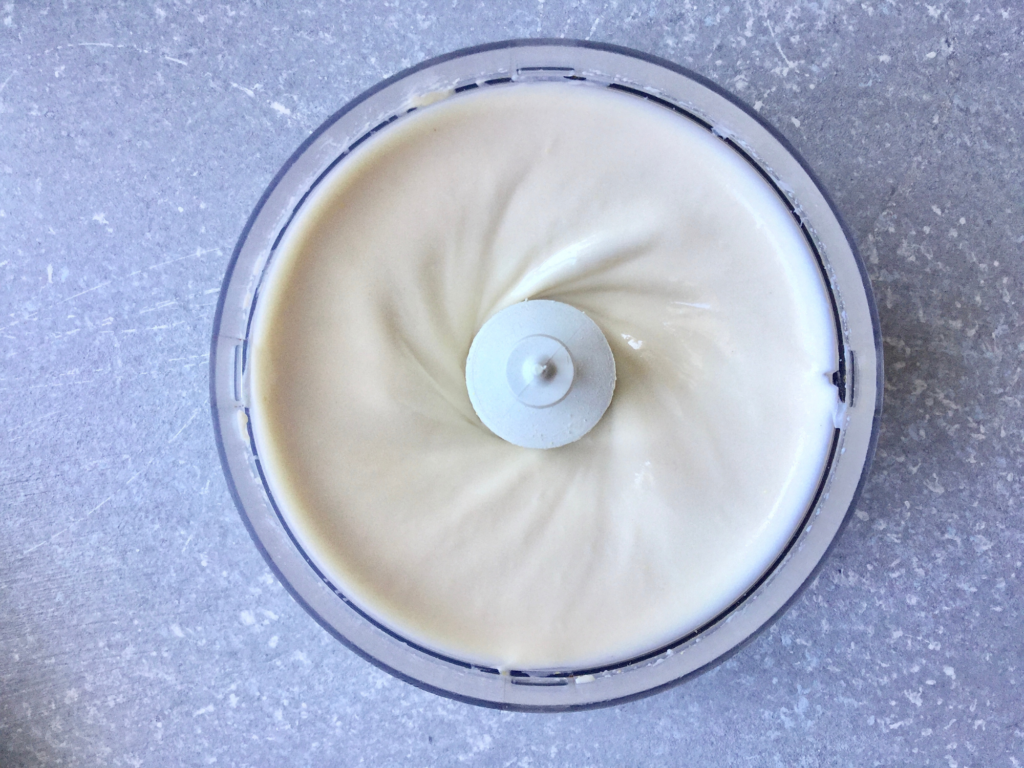
Slowly stream in the oil while the food processor or blender is running (like making mayo) until it’s all in. Then blend in the rest of the ingredients and taste for adjusments. It will look like mayo, but it’ll get thicker as it hardens in the fridge.
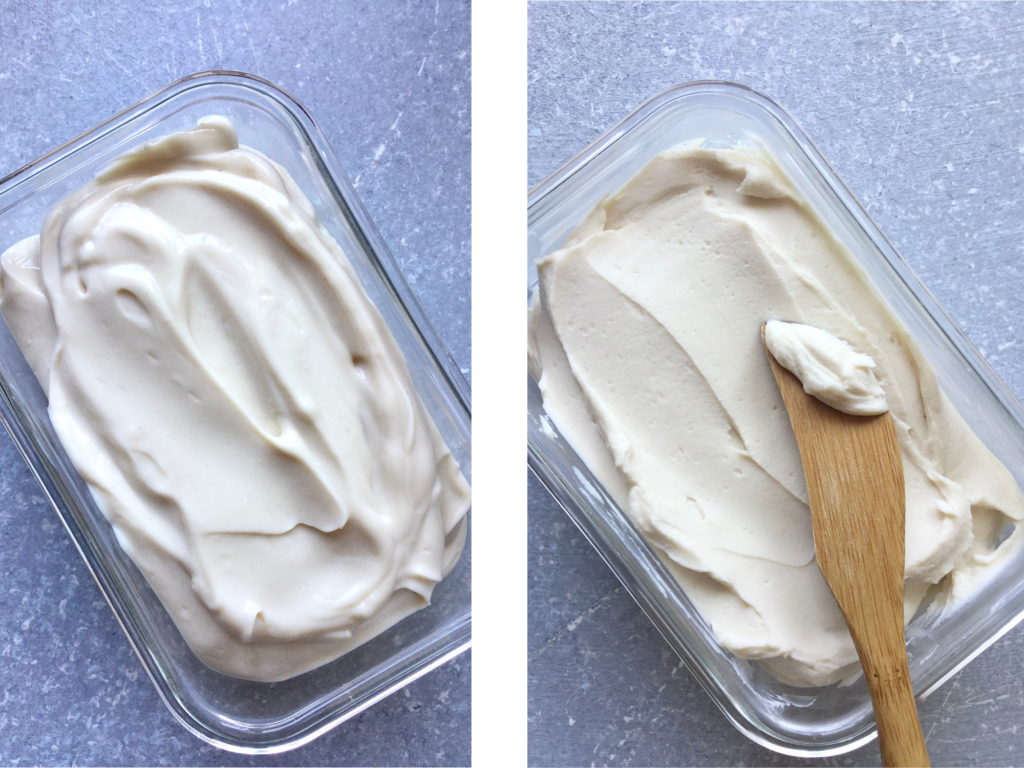
Pour it into a container or jar, close it and refrigerate for at least 2 hours. Then it’s ready to be enjoyed!
Adjusting the flavour
As mentioned, depending on the brand of yogurt you make the recipe with, the flavour will be slightly different. So, really, the quantities of salt, nutritional yeast and lemon juice are just guidelines. You can adjust them to your taste.
Salt and nutritional yeast help to round out the flavour so the cream cheese doesn’t just taste like thickened yogurt. Whereas the lemon juice adds another dimension of tang. If you find your end result to already be acidic enough, you can skip it.
And if you find it to be too tangy, you can add a pinch of baking soda at a time until the level suits you. Since baking soda is highly alkaline, it neutralizes the acidity in the cream cheese. The more you add, the less acidic it will be. But be careful not to add too much as it will make it kind of fizzy and have a strange aftertaste. You might notice that it foams slightly when you stir it in, but that’s just the initial chemical reaction and it’ll go away.
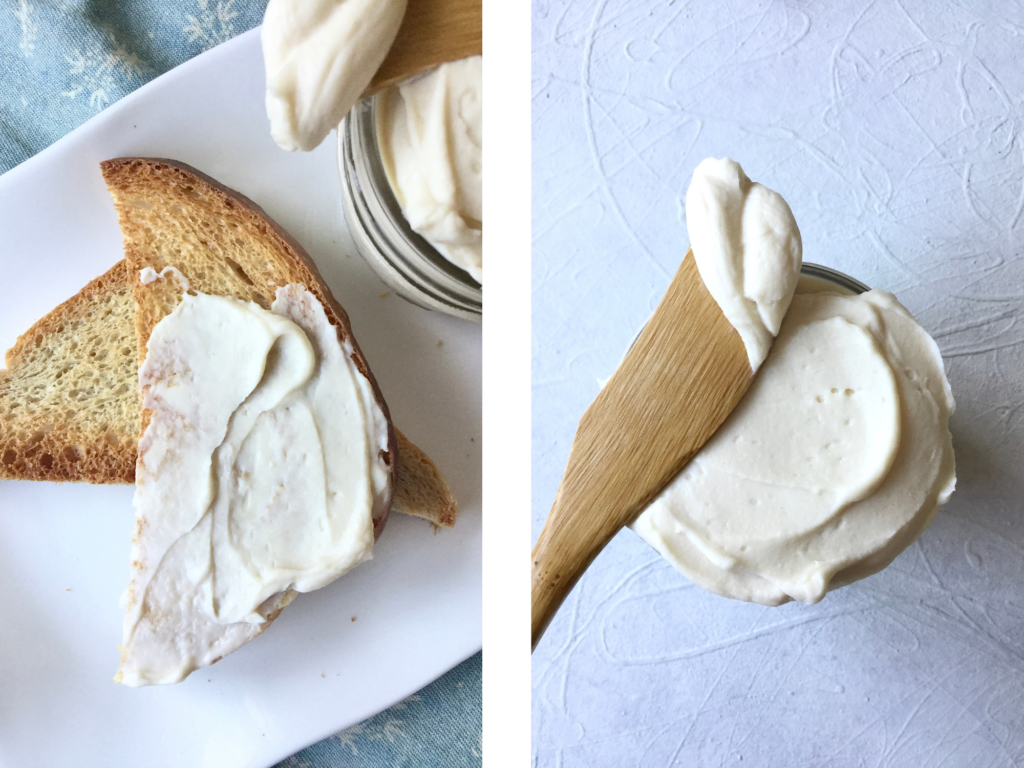
As for additional flavourings, you can pretty much do whatever you want. If you’re wanting a sweet cream cheese, you can add a bit of sugar, strawberries or other fruits. But if you can also go savoury and add chives, dill, different spices, garlic etc.
storing it
This vegan cream cheese will keep in the fridge for about 2 weeks in a closed container. I wouldn’t recommend freezing it since it’s an emulsion so it would most likely break and release water as it thaws. So it would have to be reblended and even then it wouldn’t be the same. Honestly, it’s so easy to make that there’s no point going through the trouble of freezing it!
This is by no means a new concept, so I did not invent it! (It’s also how traditional labneh is made.) It’s already been done before (vegan and non-vegan) by Chef John, The Vegan Corner, Perle en Sucre and probably a lot of other people I’m missing. This is simply my take on it.
If you make this recipe please let me know in the comments! All feedback is very much appreciated and I would love to hear from you! You can also tag me on instagram @the.quaint.kitchen or use the hashtag #thequaintkitchen to share your creations!
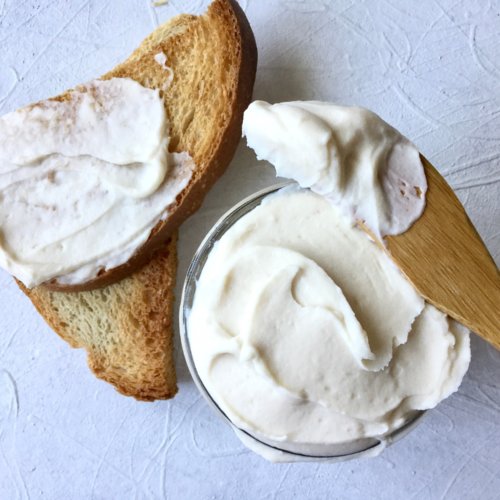
Vegan Cream Cheese
Ingredients
- 400 g plain unsweetened soy yogurt*
For 280g of remaining yogurt (adjust these ingredients according to your quantity of yogurt)
- 40 g refined coconut oil, melted
- ⅛ tsp salt, or to taste
- ½ tsp nutritional yeast
- ½ tsp lemon juice, or to taste
- pinch of baking soda, if the cream cheese is tangier than you want it
Instructions
- Line a strainer with 2-3 layers of cheesecloth, a nut milk bag or a muslin cloth. Place it over a deep bowl and pour the yogurt into the lined strainer. Tie it up and let it drain in the fridge for 24 hours.
- Once drained, transfer the remaining yogurt (I had 280g left) to a small food processor or blender. Then, while it’s running, slowly stream in the melted coconut oil to create an emulsion (like making mayo).*It’s preferable if both ingredients are close to the same temperature for a stable emulsion, but it’s not the end of the world if they’re not. But if your yogurt is cold, make sure the coconut oil is hot enough not to solidify when poured in.
- When all the oil is in, blend in the rest of the ingredients and adjust the quantitites to your taste. If you find it too tangy, add in a tiny bit of baking soda at a time to neutralize the acidity slightly. Don’t add too much or you’ll risk ending up with an aftertaste.
- Pour the cream cheese into a container or jar, close it and refrigerate for at least 2 hours for it to thicken before enjoying!
Notes
- I strongly suggest making recipes by weight, if you make them by cups I can’t guarantee that you’ll get the same results.
- This recipe yields basic cream cheese so you can add any flavourings you want in the form of spices, herbs, etc.
- *I also tested the recipe with silk unsweetened almond yogurt and it worked as well.

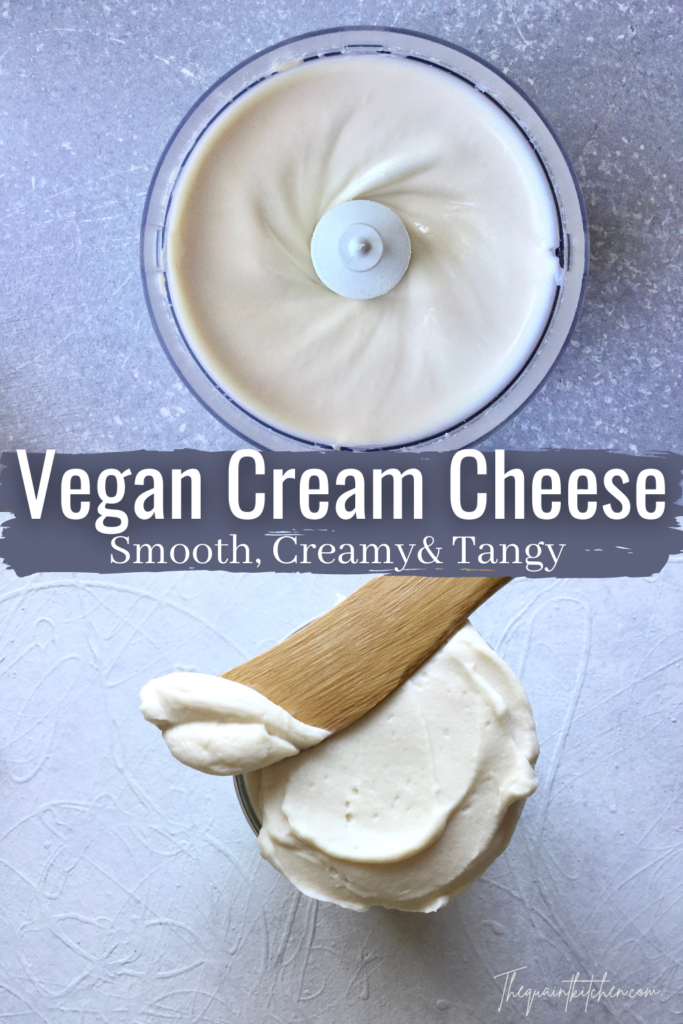
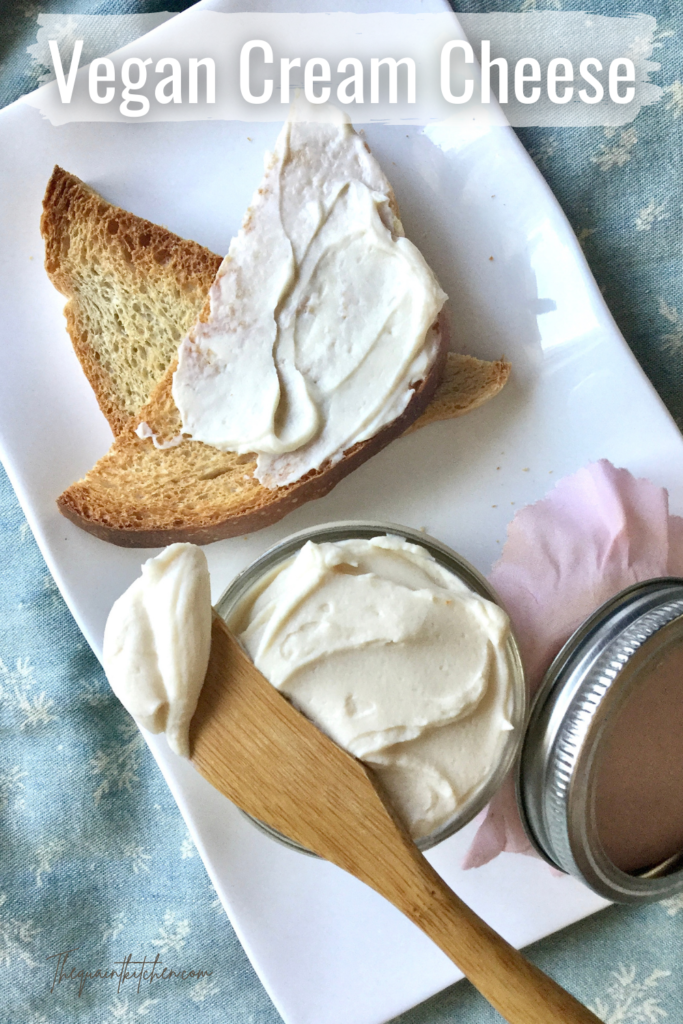
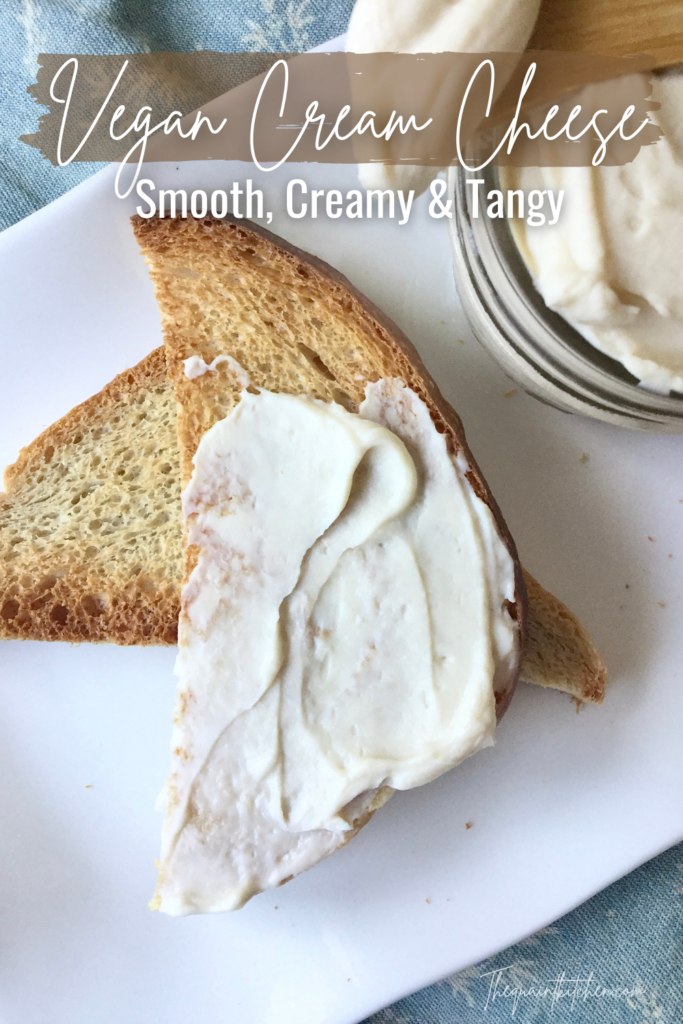
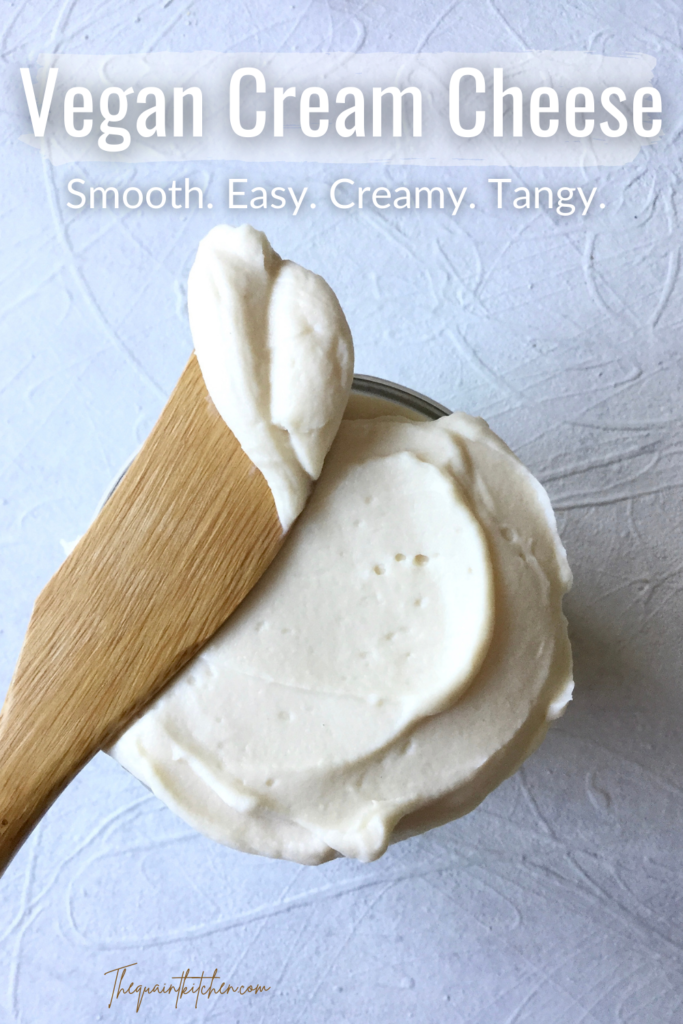
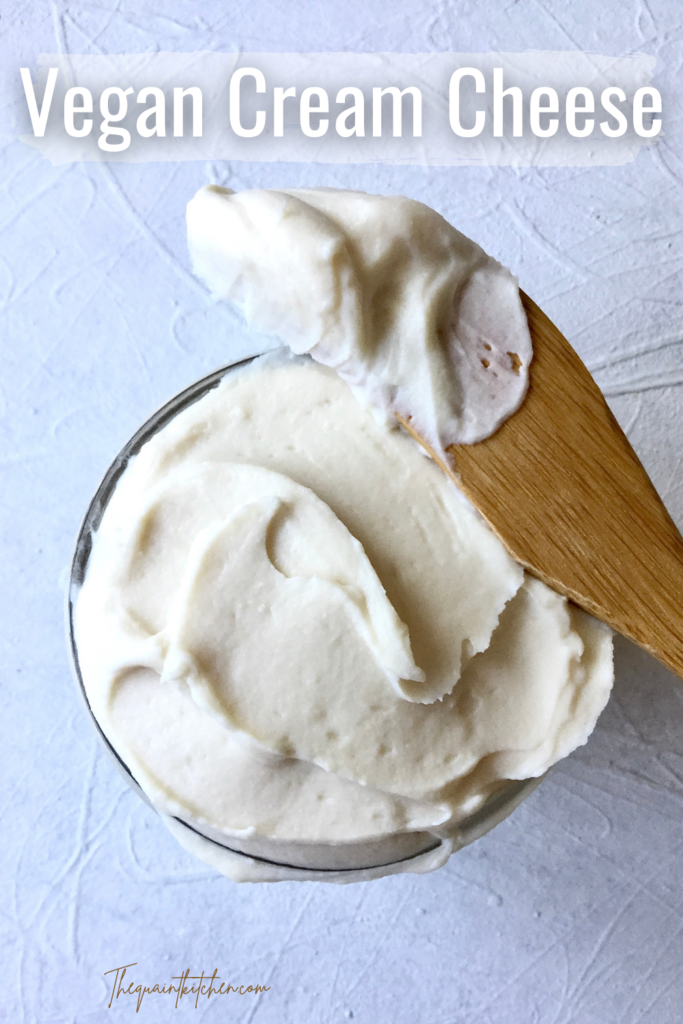
A refreshingly honest and educational style you have. Is it necessary to carefully sanitise the cheesecloth, sieve, bowl etc to hospital-grade hygiene levels before using? From the reading I have done, sanitising is more of a necessity at the inoculation stage, where the desired culture has not already colonised the food in question. Once a culture has been established it is less easy for other cultures to invade the same foodstuff. So my guess is that it is not necessary to treat yoghurt sitting overnight in the fridge to the same level of hygiene. Do you agree?
Thank you so much Laura! I completely agree. As you mentioned, the culture is already established and stable so there’s no need for everything to be sanitized to that degree as it isn’t as fragile as when it’s forming. And since the yogurt is kept in the fridge for the duration of the draining, there’s no risk of any bad bacteria growing in that time (assuming of course that the equipment is still well cleaned and the yogurt isn’t too old or has already started to go bad).
Makes perfect sense. Excited to try and see how it turns out!
Would love to know how it went if you do! I hope you’ll like it 🙂